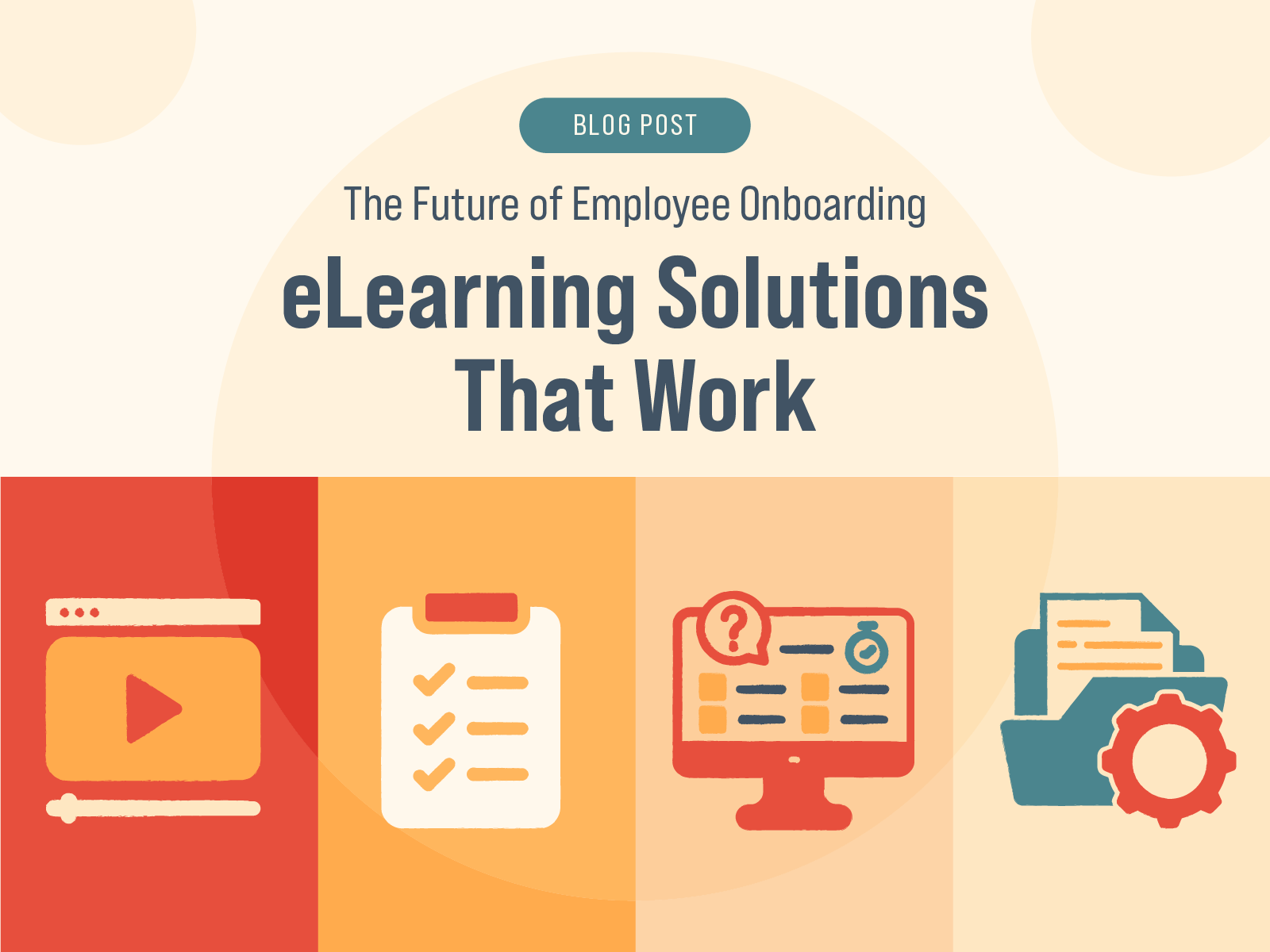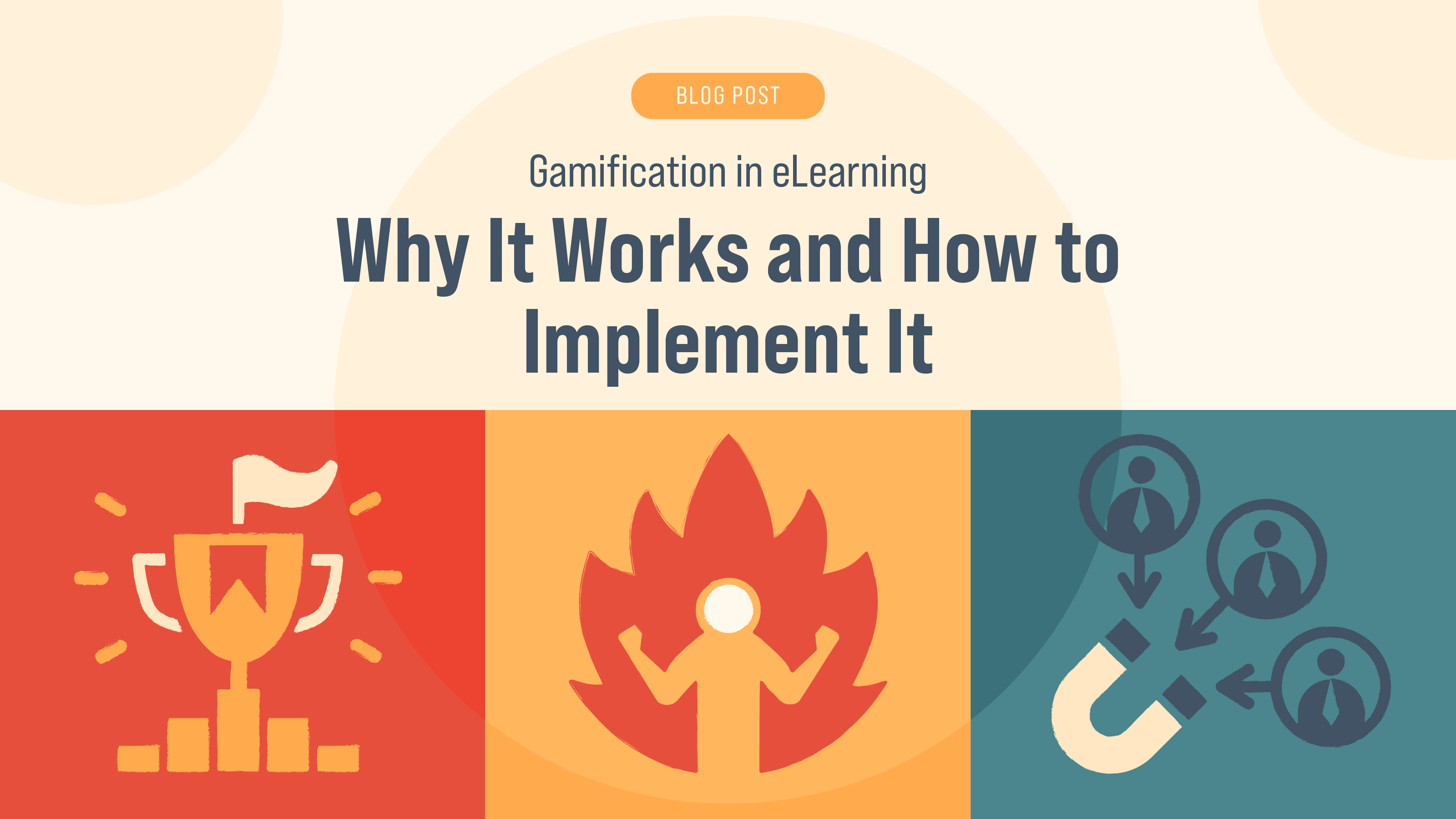Gamification in eLearning: Why It Works and How to Implement It
Make training fun? Yes, it’s possible—and it works! Gamification has become a powerful tool for eLearning, capturing learners’ attention and boosting retention through engaging, interactive experiences. By incorporating game-like elements into training, organizations can motivate employees, improve learning outcomes, and foster collaboration. Here’s why gamification works and how to get started.
Why Gamification Works

Gamification taps into intrinsic motivations, transforming routine training into an enjoyable experience. Here’s how:
• Engages Learners: Game elements like challenges, rewards, and competition appeal to learners’ natural drive to achieve goals.
• Improves Retention: Active participation, such as solving puzzles or completing quests, helps learners retain information better than passive methods.
• Fosters Collaboration: Gamified training often includes team-based activities that encourage friendly competition and strengthen workplace relationships.
These benefits make gamification an effective strategy for increasing learner engagement and delivering impactful results.
Elements of Effective Gamification
To design a successful gamified eLearning program, include these key elements:
• Points, Badges, and Leaderboards: Reward learners for completing tasks, hitting milestones, or demonstrating mastery. Creating excitement helps learning be more lasting and embedded in the participants' knowledge.
• Interactive Challenges and Quizzes: Use activities that require learners to apply knowledge and solve problems. Applying their learning helps users be prepared to use the knowledge they've learned outside the training on the job.
• Scenario-Based Learning or Storytelling: Create immersive experiences that simulate real-world scenarios, making learning more relatable and memorable.
These features create a dynamic and enjoyable learning environment that keeps learners coming back for more.
How to Get Started
Implementing gamification in eLearning doesn’t have to be complicated. Here’s how to begin:
1. Identify Goals for Gamification: Define what you want to achieve, such as increased engagement, improved retention, or mastery of specific skills.
2. Ensure Relevance to Content: Design gamification elements that directly reinforce the learning objectives. Games for the sake of fun can distract learners, but when tied to the content, they deepen understanding and engagement.
3. Choose the Right Tools and Platforms: Select eLearning platforms that support gamification features like leaderboards, badges, and progress tracking.
4. Measure Success: Use learner feedback and analytics to evaluate the effectiveness of gamification and make necessary adjustments.
A thoughtful approach ensures your gamification efforts align with organizational goals and learner needs.
Conclusion: Let’s Gamify Your Training
Gamification turns training into an engaging, results-driven experience that learners enjoy. By incorporating points, challenges, and storytelling, organizations can boost retention, motivation, and collaboration in their teams.
At Allegro Media Design, we specialize in creating gamified eLearning programs that inspire and engage. Let’s gamify your training! Contact us to start designing an engaging course today.
More Articles


The Future of Employee Onboarding: eLearning Solutions That Work

What is SCORM and What Does it Matter

Accessibility in eLearning: Why It’s Essential and How to Achieve It

Microlearning: Bite-Sized Training for Big Results

Soft Skills Training Through eLearning: Building Better Leaders

How to Write Learning Objectives for eLearning Courses

When to Outsource Your eLearning Development (and How to Choose the Right Partner)

Employee Engagement in 2025: How eLearning Can Help

Training for a Multigenerational Workforce: Meeting Everyone’s Needs

The Future of eLearning: 4 Trends Shaping the Industry

How To Find the Right eLearning Developer

What Makes eLearning Effective?

Transform Your eLearning with the Magic of Animation

How to Use Audio to Enhance eLearning

Boost Learning Efficiency with Microlearning

Give Your Dated eLearning a Fresh Facelift

The Process of eLearning Part 5: The Implementation Phase

The Process of eLearning Part 4: The Development Phase

The Process of eLearning Part 3: The Design Phase

The Process of eLearning Part 2: The Analysis Phase

The Process of eLearning Part 1

Empower Your Workforce with Self-Paced Training

Elevate Your Training with Exceptional Visual Design

Taking the Confusion Out of SCORM

Embrace Efficiency: The Power of Outsourcing Your eLearning Production

Mastering eLearning: Elevating Corporate Training Through Scenario-Based Learning

Converting ILT to vILT: Embrace the Virtual Shift

Spice Up Your Boring Corporate Training With Animated Videos Copy

From Concept to Clicks: The Crucial Role of eLearning Developers

Lost in Translation: Mastering Multilingual eLearning

Training Crossroads: ILT or eLearning – What's Your Strategy?

How to Transform Boring Compliance Training

Last-Minute Crunch? Allegro Media Delivers Rapid eLearning Solutions Just-In-Time!

The Art of Chunking (or How to Eat a Whale)

Zen & The Art of eLearning Maintenance: Finding Harmony with Allegro Media Design

How to leverage ChatGPT for eLearning Applications

What Should I Look for When Hiring an eLearning Vendor?

Unveiling the Future of eLearning: Trends to Watch in 2024

Subject Matter Experts: Be Proud! Allegro loves you just how you are!

What in the World is an LMS?

Enhancing eLearning Engagement: The Power of Scenario-Based Interaction with Stylized 3D Motion Images

Enhancing eLearning with DALL-e: Adding Visual Reinforcement for Engaging Corporate Training

Choosing the Right Authoring Tool for Your eLearning Course

High Quality Audio is ESSENTIAL in Modern eLearning

What in the World is SCORM?

A Complete Guide to Leadership Training and Development

Benefits of Customer Service eLearning Training

14 Tips To Effectively Use Audio for eLearning Courses

10 Instructional Design Tips for Effective eLearning

Why You Should Use eLearning For Product Training

Benefits of Voice Overs for Your Business

How to Create Great eLearning Content: 9 Tips

Video Marketing for Business: 10 Benefits of Promotional Videos

Gamification in the Workplace: Why and How to Use It

5 Best Practices for Training Remote Employees

How to Avoid eLearning Burnout and Fatigue

What Is Customer eLearning Training and Why Do You Need it?

8 eLearning Sales Training Best Practices: Tips & Use Cases

How to Effectively Use Videos in eLearning

Best Practices for Remote Employees Onboarding with eLearning

Why You Should Invest in Corporate eLearning?

How Can eLearning Reduce Employee Burnout?

How to Motivate Employees to Participate in eLearning Training: 9 Tips

eLearning Trends and Predictions: 2022 Forecast

7 Reasons to Outsource Your eLearning Course Development
%20to%20Virtual%20Instructor-Led%20Training%20(VILT).jpg)
How to Convert Instructor-Led Training (ILT) to Virtual Instructor-Led Training (VILT)

12 Best Tips on How to Improve Employee Training with Gamification in 2021-2022

What Is Compliance Training and Why Is It Important for Your Business?
%20vs.%20eLearning.jpg)
Instructor-Led Training (ILT) vs. eLearning: Which Should I Choose?

The Difference Between An Instructional Designer And An eLearning Developer
















